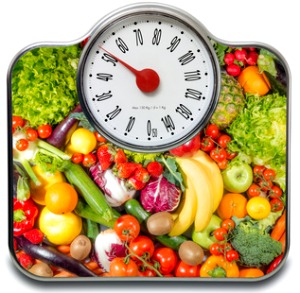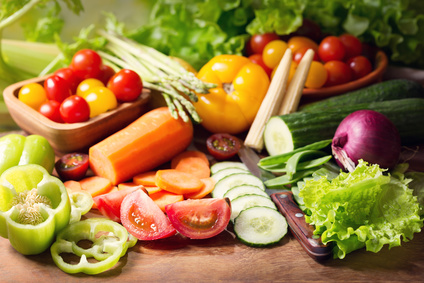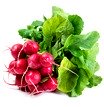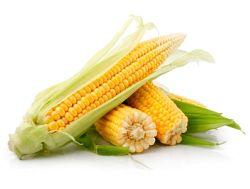A Fruit and Vegetable Diet ...
Could That Work for You?
Are you pondering a fruit and vegetable diet these days? And why not, as you probably heard some version of the fruit-and-veggie "mantra" from time to time when you were a kid: Why do you have to eat them? Because they're good for you, dummy—now, down the hatch! Or words to that effect...

Not being "dummies" themselves, Mom and Granny knew a thing or two about those F&Vs, notably that their loaded with vitamins, minerals, and fiber. Quite possibly, they also
knew or at least suspected that fresh produce sometimes helps people
slim down as well.
In fact, a diet containing plenty of fruits and
veggies can be a great overall strategy for health and fitness IF you
can maintain it. And how do you keep those fruits and veggies safely in your corner?
One simple way begins with your dinner plate, which could start featuring larger and larger portions of vegetables, fruit, and whole grains or legumes. You make that happen by replacing some of the meat, cheese, white pasta, or rice you may be eating now with legumes and/or steamed, grilled, or fresh veggies. Unless you begin using a larger plate (boo-hiss), your new regimen reduces the total calories and fat in your meal without also reducing the amount of food you eat: a critical distinction.
What About Calories?
Also critical will be your recognition that every calorie you ingest adds up, even when that calorie comes from veggies. Like you didn't know that, but an occasional reminder rarely hurts. Sure, fruits and veggies have fewer (and often less-fattening) calories than many other foods, but they do contain some. So if you're adding more of them to what you already eat, you’ll be adding calories and may also add some weight: probably not the objective here.
Keeping a Fruit and Vegetable Diet Balanced
Unless you’re undertaking this diet as a cleansing exercise, please don’t confine yourself strictly to fruits and veggies. You need plenty of protein, too (IMHO). In fact, you might consider eating according to the Mayo Clinic "healthy weight" pyramid. (And, if you're in the vegetarian/vegan camp, be sure to include plenty of legumes and other protein sources.)
 |
Also, try to keep a good color mix on your plate: not all green, or all
yellow, or all purple and red. That way you’ll likely also balance your
starchier (and sweeter) veggies with green and leafies. |
Without a good color balance, for example, you’re less likely to reap the full range of possible nutrients: fiber, folate, potassium, and vitamins A and C. So, over a two-day period, you might arrange to eat spinach, chard, or asparagus (green), tomatoes and squash blossoms (red and yellow), sweet potatoes (orange), beans (black, white, or pink), corn (more yellow), eggplant (purple), and leeks (green/white)...and some parsley and fresh basil here and there to liven things up. Click here or here for some veggie lists.
What gigs such as this fruit and vegetable diet mainly involve are some thought and also perhaps some changes of habit. And sure, sometimes you just don't want to bother. But we're not talking rocket science here—simply awareness, intent, and probably some planning. For you, a piece of cake (so to speak).
Please understand that the material at this site is NOT medical advice, as I am neither doctor nor nutritionist. What I am is merely someone who's lived successfully on a vegetarian diet for many decades...and I transitioned from omnivore to vegetarian gradually. Do check with your doctor, though, if you're considering big changes to your own diet. Also, be sure to find a dependable source of Vitamin B12.
Living Vegetarian the Easy Way
Copyright 2010-2024. Lynda Edwards. All rights reserved.



